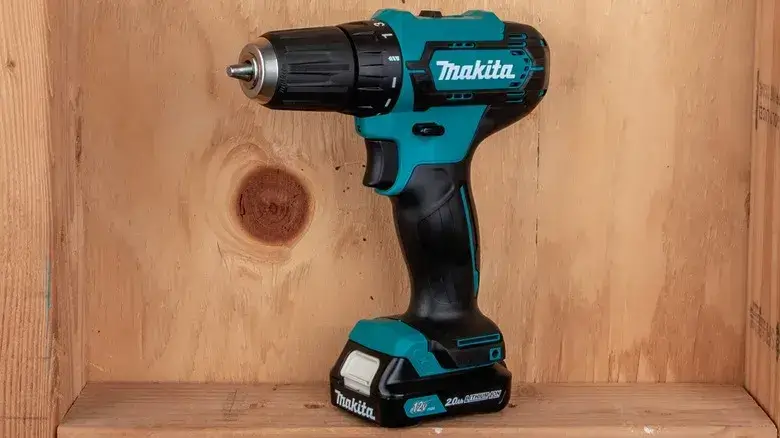Drills are one of the most versatile and useful tools for any DIY enthusiast, professional contractor, or home improvement project. They can be used to make holes, drive screws, mix paint, sand wood, and more. But with so many types and models of drills available, how do you know which one is the most commonly used and suitable for your needs?
The Most Common Drill: The Cordless Drill
The answer to the question of which drill is most commonly used is the cordless drill. According to a survey by Consumer Reports, cordless drills are the most popular type of drill among American consumers, with 71% of respondents owning one. Cordless drills are also the most widely used type of drill by professional contractors, according to a report by Pro Tool Reviews.
But what makes cordless drills so common and popular? Here are some of the reasons:
- Convenience: Cordless drills are powered by rechargeable batteries, which means you don’t have to worry about finding a power outlet or dealing with cords and extension cords. You can use them anywhere, indoors or outdoors, and move around freely without being limited by the length of the cord.
- Versatility: Cordless drills can perform a variety of tasks, from drilling holes in wood, metal, plastic, and concrete, to driving screws, bolts, and nails, to attaching accessories like sanding discs, wire brushes, and hole saws. You can also adjust the speed and torque of the drill to suit different materials and applications.
- Performance: Cordless drills have improved significantly in recent years, thanks to advances in battery technology, motor design, and electronic controls. Modern cordless drills can deliver more power, run longer, and charge faster than ever before. Some cordless drills even have features like LED lights, belt hooks, and magnetic bit holders to enhance their functionality and usability.
How to Choose the Best Cordless Drill for Your Needs
While cordless drills are the most common type of drill, they are not all the same. There are many factors to consider when choosing the best cordless drill for your needs, such as:
Battery Voltage: The battery voltage determines how much power the drill can deliver. Higher voltage means more power, but also more weight and cost. The most common battery voltages for cordless drills are 12V, 18V, and 20V. For most DIY and home improvement projects, a 12V or 18V drill will suffice. For heavy-duty and professional applications, a 20V drill may be necessary.
Battery Capacity: The battery capacity determines how long the drill can run on a single charge. Higher capacity means longer run time, but also more weight and cost. The battery capacity is measured in amp-hours (Ah) or watt-hours (Wh). The most common battery capacities for cordless drills are 1.5Ah, 2.0Ah, 3.0Ah, 4.0Ah, and 5.0Ah. For occasional and light-duty use, a 1.5Ah or 2.0Ah battery will suffice. For frequent and heavy-duty use, a 3.0Ah, 4.0Ah, or 5.0Ah battery may be necessary.
Chuck Size: The chuck size determines the maximum diameter of the drill bit or accessory that the drill can accept. Larger chuck size means more versatility, but also more weight and cost. The most common chuck sizes for cordless drills are 1/4 inch, 3/8 inch, and 1/2 inch. For most DIY and home improvement projects, a 3/8 inch chuck will suffice. For heavy-duty and professional applications, a 1/2 inch chuck may be necessary.
Clutch Settings: The clutch settings determine how much torque the drill can apply before it stops turning. This helps to prevent overdriving or stripping screws, or damaging the material or the drill. More clutch settings mean more precision, but also more complexity and cost. The most common number of clutch settings for cordless drills are 15, 18, 20, and 24. For most DIY and home improvement projects, 15 or 18 clutch settings will suffice. For heavy-duty and professional applications, 20 or 24 clutch settings may be necessary.
Speed Settings: The speed settings determine how fast the drill can rotate. Higher speed means faster drilling, but also more noise and heat. Lower speed means more torque, but also more control and accuracy. Most cordless drills have two speed settings: low and high. Some cordless drills have three or more speed settings, which allow for more fine-tuning and optimization. For most DIY and home improvement projects, two speed settings will suffice. For heavy-duty and professional applications, three or more speed settings may be necessary.
Conclusion
Cordless drills are the most commonly used type of drill, thanks to their convenience, versatility, and performance. They can handle a wide range of tasks and materials, and are suitable for both DIY and professional users. However, not all cordless drills are the same, and you should consider factors like battery voltage, battery capacity, chuck size, clutch settings, and speed settings when choosing the best cordless drill for your needs. By doing so, you can ensure that you get the most out of your cordless drill and enjoy your drilling experience.

